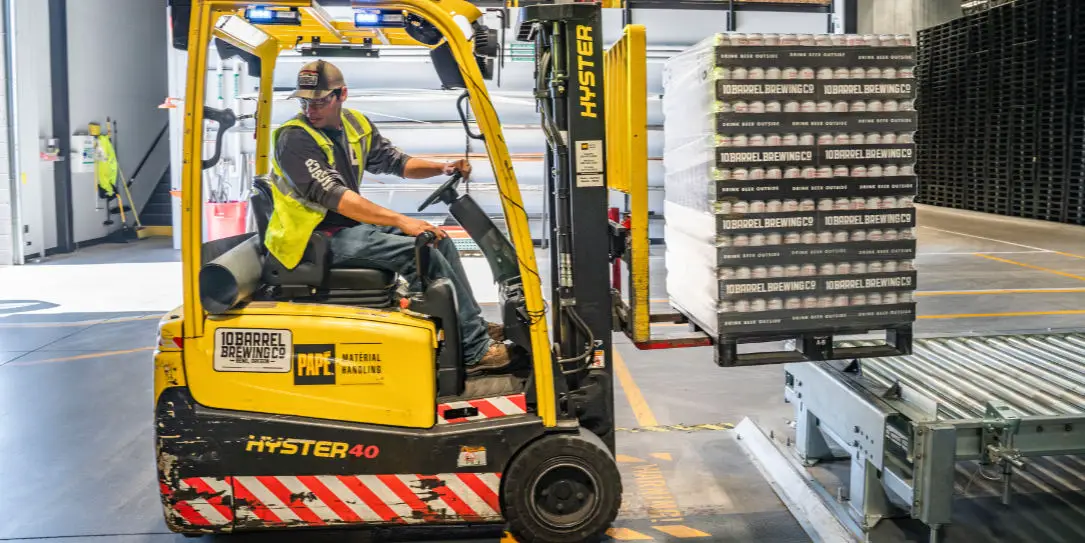There are few lives that COVID-19 hasn’t affected in some way. Whether it’s the need to be socially distant from our extended families or the requirement to change to remote working conditions, our sense of normality has been shifted. Businesses of all sizes are having to find ways to respond to new challenges, especially in the supply chain.
Businesses in the supply chain have been especially disrupted. They are having to navigate the new obstacles caused by the pandemic while also reacting to fluctuating, if not growing, demand for production and delivery. Business leaders are reassessing their work practices, attempting to keep their employees safe, while seeking to provide essential items to consumers.
So what are the specific problems the supply chain faces as a result of COVID-19? What are the potential solutions for recovery? Are there tools available to assist through this crisis, and help better prepare the industry for the future?
The Immediate Effect
Perhaps the most obvious way in which elements of the supply chain have been affected by COVID-19 is in the balance between supply and demand. We’ve seen significant disruption caused by unprecedented product hoarding. Empty shelves and continued demand for these missing products has seen the supply chain struggle to keep up with the required production and delivery for restocking stores.
The ability of the supply chain to respond effectively has been restricted by the measures needed in order to keep staff and customers safe. While essential services are allowed to continue operation, workers are still required to maintain social distance and follow various other preventive practices such as regular disinfecting of workstations and equipment. In many depots, the capacity of trucks and drivers present at any one time has been limited, leading to some delays in the delivery of produced goods to outlets.
The food supply chain has also hit some significant challenges. While food is still going to consumers via stores and supermarkets, many providers have seen a dramatic drop in demand due to the closure of restaurants, hotels, and schools. Dairy farmers have reported a decline of 12-15%, leading to the dumping of supplies. One liquid egg supplier in Minnesota resorted to euthanizing 61,000 chickens due to a reported decline in demand. Problems at these facilities also have a knock-on effect in the chain, resulting in the employment of fewer production staff, the use of fewer delivery drivers, and less stock in stores.
Mounting a Response
We know the problems and the effect the pandemic has had, but what has the reaction been? While there have certainly been some issues, it has become clear that the key to an effective response is proper supply chain management (SCM). Many businesses have embraced the importance of this for some time, understanding its role in ongoing efficiency, lowering overheads, and boosting cooperation between leaders, staff, and other suppliers. In our current environment, SCM can enable agility.
Some important aspects to focus on include:
- Prioritization. Make a plan that identifies the changes in priorities. This can include your current staff needs — who is essential for operations, can others be moved or retrained in order to allow for changing circumstances? But this should also include your supply priorities. When there is a limit on raw materials and an increase in demand, simply manufacturing more product isn’t always practical; how can you adjust the chain to suit your new priorities.
- Diversification. While loyalty in relationships and consistency of product quality is vital for a successful business, relying on a single source of materials or goods can prove disastrous when emergencies arise. Businesses should seek to gain a greater understanding of the supply pool within their industries, and where to build secondary or even tertiary supplier relationships that can be activated or leveraged when needed.
- Planning. It can be tempting at times of crisis to focus all your energy on the immediate issues. However, it is likely that there will be disruption for some time, and may even lead to recession. This means not only preparing for fluctuating demands but also making plans for a flexible pricing strategy and efficient communication with suppliers and customers.

Tools for Recovery
In order to successfully emerge from this pandemic, and thrive in the future, the supply chain also needs to place some focus on the tools that can assist in its recovery. Our digital landscape is constantly offering opportunities for us all to explore the potential of new technology in making our processes more efficient. Engaging with these tools now may even help us discover new uses for platforms, in the same way that blockchain — the security ledger system that protects cryptocurrency transactions — may be used to help streamline logistics processes and potentially help goods arrive quicker.
Real-time data analysis on customer demand, resource inventory, and the product’s journey from manufacturing to delivery can help leaders to understand where to make improvements and how to shift resources. The lower costs of RFID sensor equipment can help to provide accurate data on this journey, and AI systems can be used to analyze this data and optimize production processes and delivery routes accordingly.
The introduction of 5G networks is one of the most important tools coming down the pipeline. It is predicted that this new generation of wireless internet service will have 10 times the bandwidth of the current 4G platform. There is significant investment going into the infrastructure of these networks, and the supply chain should soon be able to benefit from being able to maintain efficient communication with logistics drivers on the road, and speedy access to data. 5G also has the potential to make other new technologies a reality. The reduction in signal lag, in particular, could see automated driving systems a practical and safe option for supply chain logistics.
Conclusion
The coronavirus pandemic has disrupted most industries, and the supply chain has been one of the most significant. Demands have fluctuated, resources have been stretched, and the implementation of process changes have all been contributory factors. But by focusing on the development of good supply chain management, and exploring the technological tools available to us, leaders in the supply chain can help boost their chances of a successful recovery.
What do you think? Let us know in the comments below or on Twitter, or Facebook. You can also comment on our MeWe page by joining the MeWe social network.
Last Updated on February 3, 2021.










